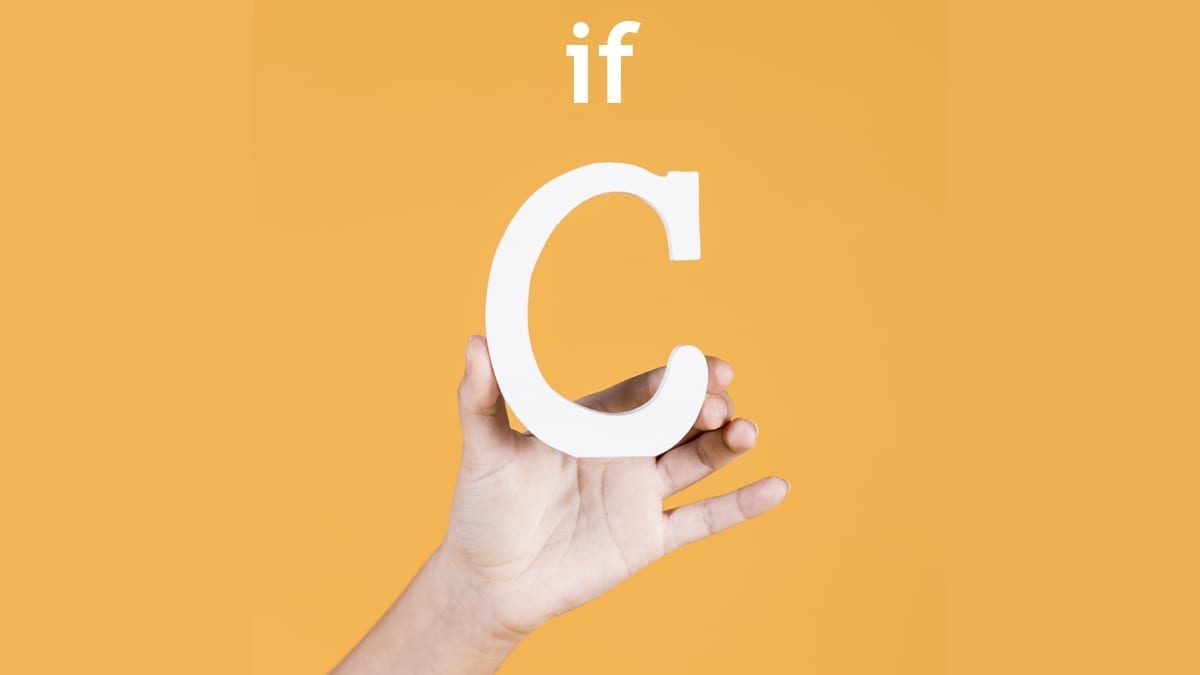It is the simplest decision instruction of all. Is true (1) or false (0)? The use of if is widespread and it's the best way to start with decision making, also known as Control Flow. Check out also this post about the other instructions for decision making in the C programming language.
Table of Contents
Sample of Questions
Depending on the environment where the program in executing, the question could be similar to these:.
- Was a button pressed?
- Has a parameter changed?
- Turn on the light?
- Is the motor on?
Syntax
if
if consists in 3 parts: the word if itself at the start, the condition (between parenthesis) and the statement with a semicolon at the end. The condition is the question(s) asked and the statement is the action taken after the result of the questions is known.
if (condition) statement;The previous line of code is used if the statement can be written in only 1 line of code. If it requires more lines, then it can be written the following way:
if (condition) { statement 1; statement 2; statement 3; statement 4; //etc}else
When the if condition is false, then the code will execute the code that follows else.
if (condition) { //if the condition is TRUE, //then this code will be executed. //}else { //if the condition is FALSE, //then this code will be executed. //}Relational Operators
How to find out the result of the condition? You have to ask the correct question. The following relational operators will return a true (1) or false (0) depending in the condition.
- Equal ==.
- Not equal !=
- Greater than >
- Less than <
- Greater than or equal >=
- Less than or equal <=
For example:
if (A==B) statement //If A is equal to B, then the statement will be executed.if (A>B) statement //If A is greater than B, then the statement will be executed. Example of IF and ELSE
The following example is done for 8-bit microcontrollers and its programmed in MPlab X IDE.
In this code, I'm checking whenever buttons are pressed. If the button PORTBbits.RB0 remains unpressed, the result of checking it will return a 1. On the contrary, if it gets pressed, then the result will be 0. The statement is to turn a LED located on pin PORTBbits.RB2. The code for this action is:
if (PORTBbits.RB0==0) PORTBbits.RB2=1;Other way to express this is using the admiration sign. It will return the same result.
if (!PORTBbits.RB0) PORTBbits.RB2=1;techZorro's Index of Content
Keep Reading!
- Macros on C, how to create useful Aliases for the Code
 Macros are tremendously helpful in saving time and clutter in code writing. This tutorial includes tutorials on C. Click here to read.
Macros are tremendously helpful in saving time and clutter in code writing. This tutorial includes tutorials on C. Click here to read. - Switch in C, the neat multiple decision maker in Control Flow
 In Control Flow, Switch replaces multiples if's and merges into one elegant decision making solution. Click here to read.
In Control Flow, Switch replaces multiples if's and merges into one elegant decision making solution. Click here to read. - While loop in C language, the ‘ask first' of Control Flow
 While in C is great for creating loops using Control Flow. It's great for repeated tasks and counters! Click here to read more.
While in C is great for creating loops using Control Flow. It's great for repeated tasks and counters! Click here to read more. - Code Template, an easy guide for PIC Microcontrollers in C
 Writing a program with order is a time saver. Download today the code template for PIC microcontrollers for free. Click here to read more.
Writing a program with order is a time saver. Download today the code template for PIC microcontrollers for free. Click here to read more. - Functions in C Programming Language
 Functions lets you reutilize code efficiently and opens up libraries done by others. Click here to learn to use functions in C.
Functions lets you reutilize code efficiently and opens up libraries done by others. Click here to learn to use functions in C.



[…] while statement is a repetitive if statement. This means it continues ask the question in the condition and executes the tasks until the […]
[…] true (1) or false (0); depending on the answer, a certain code will be executed. Click in the link below to read about […]